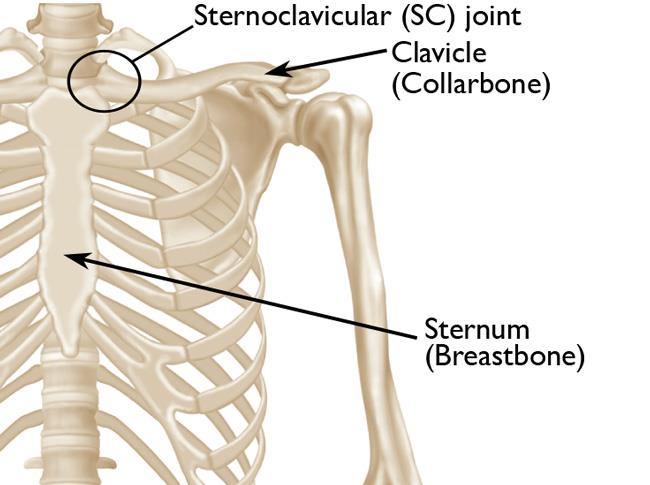1) What are the different grades of Sternoclavicular Joint Separation?
The different grades of sternoclavicular joint separation are:
- Grade I: A simple strain, also known as a grade I sprain, is characterised by an incomplete rupture or straining of the sternoclavicular and costoclavicular ligaments. Grade I injuries are the least severe.
- Grade II: A complete rupture of the sternoclavicular ligament and a partial rupture of the costoclavicular ligament is included in the diagnostic criteria for a grade II injury.
- Grade III: A complete rupture of the sternoclavicular and the costoclavicular ligaments is referred to as grade III sternoclavicular joint separation.
2) What is Sternoclavicular Joint Separation?
Your collarbone and breastbone are connected at the sternoclavicular joint, which is situated in the middle of your upper chest. A sturdy ring of tissue known as a ligament holds these bones together. Your collarbone and breastbone may become separated if the ligament stretches or rips.
The most frequent reason for a sternoclavicular joint separation is a direct blow to the breastbone or collarbone. A fall onto your shoulder or extended hands, which applies pressure to your collarbone, might also be the reason.
3) How is Sternoclavicular Joint Separation diagnosed?
Diagnosis of sternoclavicular joint separation can be done in the following ways:
Medical history and symptom review: The doctor will inquire about the patient’s symptoms, medical background, and general health.
Physical examination: The healthcare professional will inspect the injury site for abnormalities, discomfort, and other symptoms, assess the arm’s range of motion, and evaluate if the hand and fingers are receiving enough blood flow. The medical professional could advise the patient to pick up a weight to testify to make the deformity more apparent.
Imaging research: For injuries to the AC joints, standard X-rays are usually sufficient, but additional imaging techniques like CT or MRI scans may be needed to diagnose injuries to the SC joints.
4) How can Sternoclavicular Joint Separation be prevented?
Sternoclavicular joint separation injuries can be prevented by managing:
Sports and mishaps: Appropriate safety measures and gear should be used to lower the chance of these injuries, whether riding a bicycle, driving by car, or engaging in contact sports. This includes the usage of seat belts, helmets, padding, and guards, among other items.
Falls: Hard falls are more frequent in contact sports, and older individuals or those with osteoarthritis may sustain injuries from lighter falls. Maintain a clutter-free home and build railings and guardrails to reduce the chance of falling.
Osteoarthritis: As individuals age, osteoarthritis may be delayed by leading a healthy lifestyle. To reduce the risk, maintain a healthy weight, manage blood sugar, engage in regular physical activity, and remain injury-free.
5) How is Sternoclavicular Joint Separation treated?
Different treatments for sternoclavicular joint separation are:
Non-surgical management: If the SC joint damage is minimal, non-surgical therapy could be sufficient to alleviate the symptoms. Medication for discomfort, using a sling to keep you immobile, or applying cold packs are all possible treatments.
Closing reduction: Without surgery, the medical professional could attempt to realign the clavicle in cases with SC joint dislocation. The typical setting for this non-surgical procedure is the operating room, where it may be necessary to provide muscle relaxants or general anaesthesia.
Operative procedure: Surgery for SC joint injuries may be required if pain or abnormalities are severe. Surgery is more likely to be necessary if the joint is dislocated.

